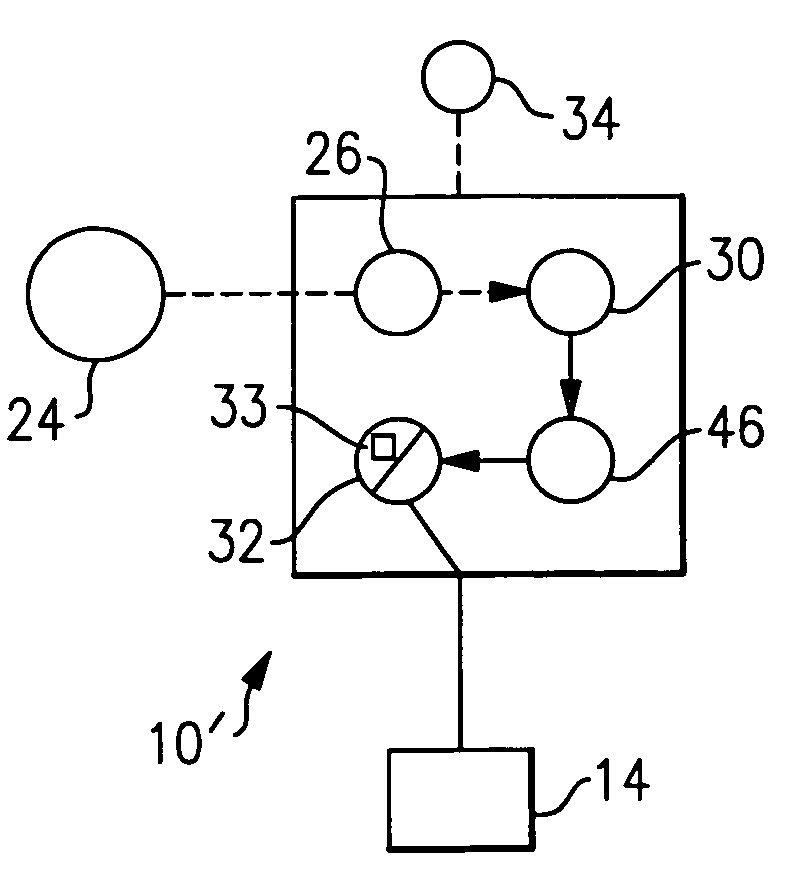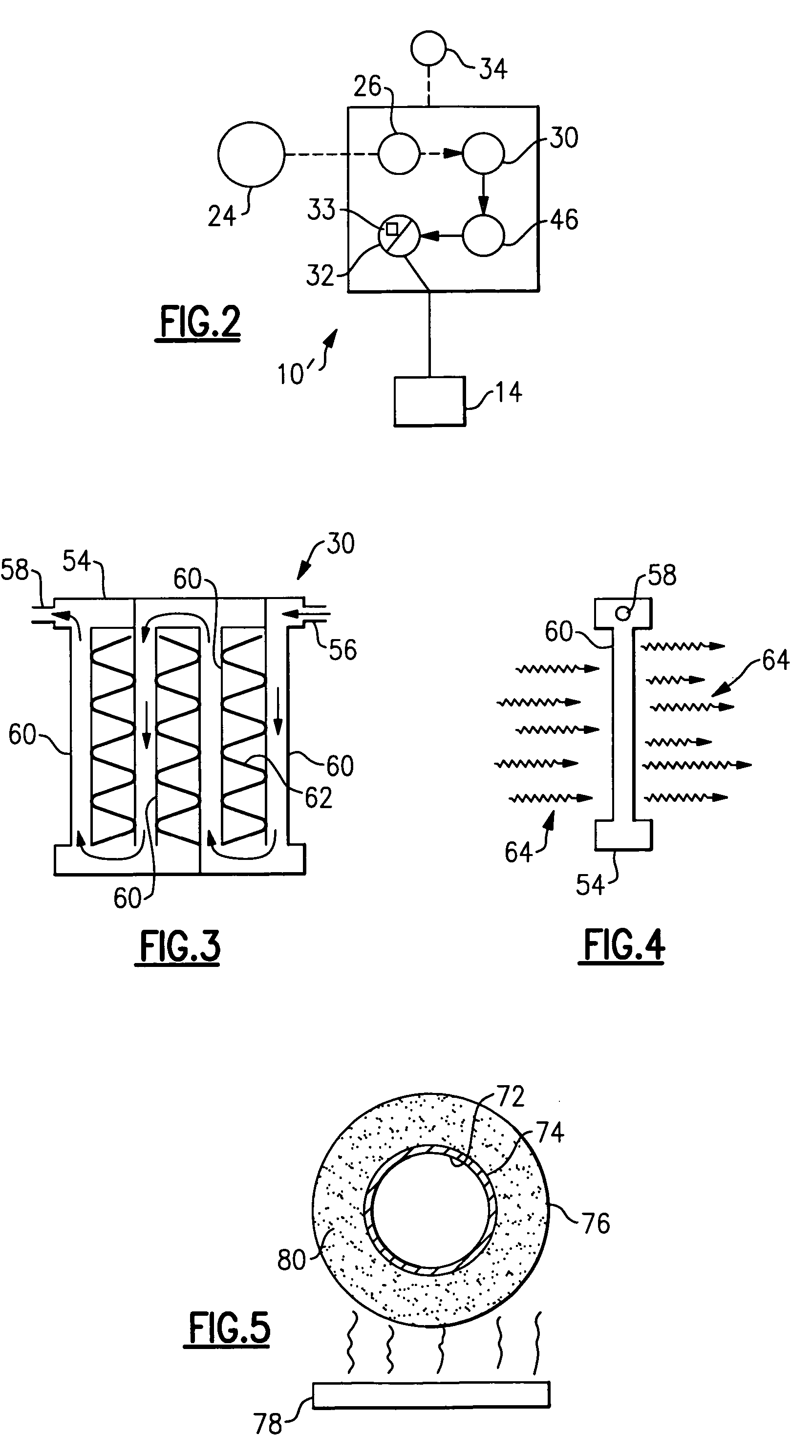Fuel system and method of reducing emission
a fuel system and emission reduction technology, applied in the direction of hot gas positive displacement engine plants, machines/engines, combination devices, etc., can solve the problems of undesirable emissions, reduced formation, and unsatisfactory treatment of undesirable emissions by conventional combustion engines or combustors, so as to reduce the emissions of undesirable combustion products, good combustor operability, good operability
- Summary
- Abstract
- Description
- Claims
- Application Information
AI Technical Summary
Benefits of technology
Problems solved by technology
Method used
Image
Examples
Embodiment Construction
[0016]FIG. 1 illustrates selected portions of an example combustion engine assembly 10, such as a gas turbine engine for an aircraft. In this example, the combustion engine assembly 10 includes a compressor 12, a combustor 14, and a turbine 16. The combustion engine assembly 10 operates in a known manner, feeding compressed air or oxidizer from the compressor 12 to the combustor 14. The compressed air or oxidizer is mixed with fuel and react to produce a flow of hot gases 18. The turbine 16 transforms the flow of hot gases 18 into mechanical energy to drive the compressor 12. An exhaust nozzle 20 directs the hot gases out of the combustion engine assembly 10 to provide thrust to the aircraft or other vehicle.
[0017]A fuel system 22 supplies fuel to the combustor 14. A fuel storage 24 holds liquid fuel. The liquid fuel is received by a fuel deoxygenator 26 from the fuel storage 24 with or without the assistance from a fuel pump. The fuel deoxygenator 26 removes or reduces dissolved ox...
PUM
| Property | Measurement | Unit |
|---|---|---|
| temperature | aaaaa | aaaaa |
| temperature | aaaaa | aaaaa |
| temperature | aaaaa | aaaaa |
Abstract
Description
Claims
Application Information
 Login to View More
Login to View More - R&D
- Intellectual Property
- Life Sciences
- Materials
- Tech Scout
- Unparalleled Data Quality
- Higher Quality Content
- 60% Fewer Hallucinations
Browse by: Latest US Patents, China's latest patents, Technical Efficacy Thesaurus, Application Domain, Technology Topic, Popular Technical Reports.
© 2025 PatSnap. All rights reserved.Legal|Privacy policy|Modern Slavery Act Transparency Statement|Sitemap|About US| Contact US: help@patsnap.com



